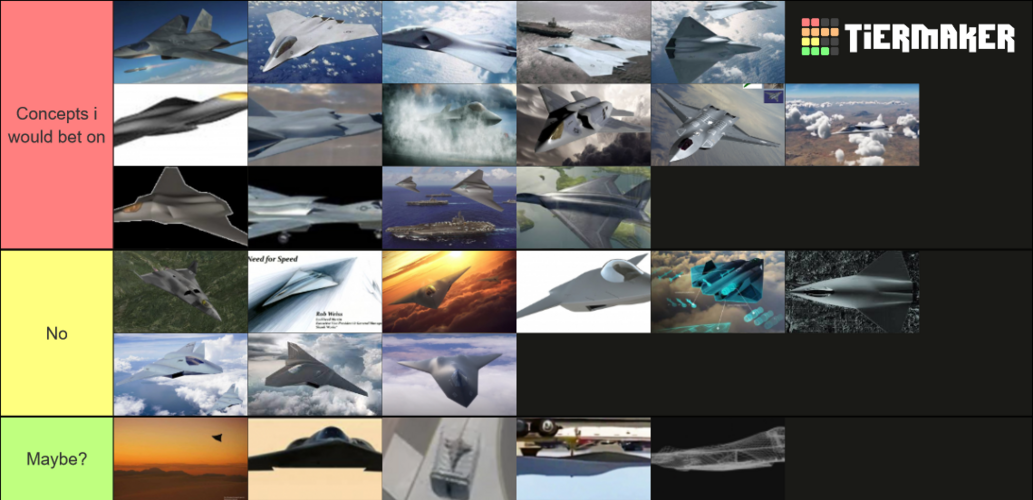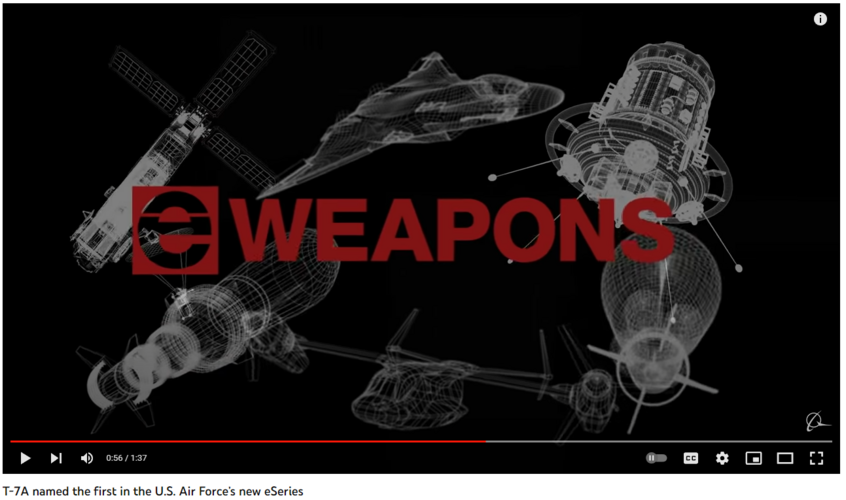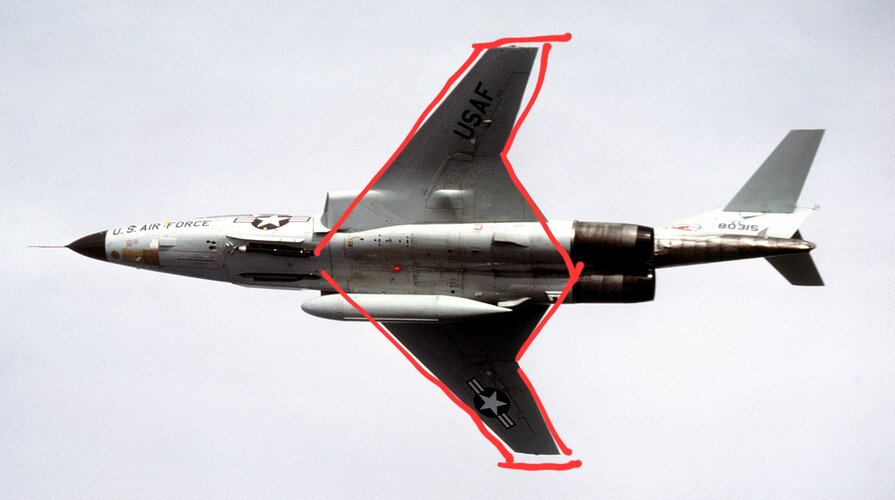"Last year, the US Navy issued a request for information (RFI)regarding its desire to replace its fleet of F/A-18E/F and EA-18G aircraft in the 2030s. Boeing recently released an updated concept of their 6th generation F/A-XX originally unveiled last year. Lockheed Martin unveil edits own 6th generation concept in a calender distributed to journalists last year. If the development of the first 5th generation aircraft (the F-22 Raptor) is any indication, the 6th generation fighter(s) that enters service after 2030 will look entirely different from either company's initial conceptual proposals.
I definitely agree with this one, especially if current global situations may forcibly change the very role and mission that the future fighter is gonna be designed for (And believe me, there are just so many changes in how warfare will be conducted at this point in time). And given how long it will take before even a prototype is finalized on paper, the possibilities of what the finished product will look like, compared to its initial mission parameters, are endless.
"The genesis of the Raptor can be traced to a Tactical Air Command (TAC) study known as TAC-85 undertaken in the early 1970s. In 1969-70, TAC-85 began inquiring into what the USAF fighter of the next century would looklike. 'Look like' went far beyond the physical appearance of the 21st-century fighter...The initial Request For Information (RFI) for the ATF was issued to industry in June of 1981. Invited to submit bids were nine aerospace companies: Boeing, Fairchild, General Dynamics, Grumman Lockheed, LTV, McDonnellDouglas, Northrup, and North American Rockwell... The RFI only specified the mission in the vaguest terms. [The] USAF waited for the industry brainstorming to come up with more defined design and capability parameters...The Advanced Tactical Fighter Statement of Operational Need (ATFSON) in November 1984 detailed the projected deficiencies of current generation fighters. This statement resulted in Congressional funding and approval for the ATF in 1985. The REP [Request Final Proposal] for the ATF was issued in July 1986." - Lou Drendel, 2011
I guess I was wrong on the F-22 thread. The Raptor, or rather, the program that resulted in its creation is way older than I thought it was. Really comes to mind that if such a program that resulted in the Raptor was conceived way back in the 70's, it really took them that long to eventually finish a concrete result of their efforts in the F-22 Raptor. Now that both the USN and USAF initiated their respective NGAD programs in just the last decade (2012 for the USN, and 2014 for the USAF), the timeline will definitely extend to the 2030s and or beyond that point.
However, there was this so-called "Digital Century Series" that would aim to shorten the Research and Development timeframe, and accelerate the production of the end result fighters by reducing the typical generation timeframe between aircraft generations to at least 15 years, allowing for the current fighter generation's successors to emerge sooner than usual, and take on the rapidly-advancing technologies that will happen in the years between aircraft generations. That way, instead of a usual 30-40 years between fighter generations, which creates a huge technology gap that will have to be filled by upgrading previous generations of fighters, and thus wasting more money that could have gone to future fighter development, the Digital Century Series will enable a smooth and rapid transition between fighter generations, which allows any Air Force following it to be capable of catching up to any adversary's latest fighters, while still making the upcoming generations of fighters far more advanced in all ways than the previous and current generations of fighters.
And while the USAF may not be fully following the Digital Century Series now, as it is far too ambitious for the current state of the USAF today, the principles and the technology needed to speed up things already exists, so even if the program itself started just in the last decade, technological advancements in both research and development, as well as in factory production should theoretically shave off some time from the research development process, and at the same time, speed up the production process. I can theorize that the estimate for the NGAD's entire development cycle should at least be 10 years less than the ATF program as a whole. (Unless other problems were to arise and plague the program into significant delays, which may likely happen).
The following timeline shows key dates in the Raptor's design and manufacturing evolution. Dates within parenthesis give a rough approximation of what can be expected of the 6th generation development program. By no means are the estimated dates conclusive or set in stone. It is definitively known that the RFI was issued by the US Navy in 2012. It is also definitively known that the US Navy plans to field the 6th generation Super Hornet replacement sometime after 2030. Given the immediate issue of F-35 procurement, it is likely that the 6th generation replacement program will be delayed beyond 2030. Current plans project the F-35 production line will remain open until at least 2036.
Timeline of Raptor Evolution
1981 (2012) RFI issued
1985 (2016) Funding Awarded by Congress
1986 (2017) Competing Firms Finalized
1990 Evaluation Concluded (2021)
1991 Raptor Declared Winner (2022)
1994 Engineering, Manufacturing and Development (EMD) contract (2025)
1997 F-22 First Flight (2028)
2001 Lot 1 Ordered (2032)
2003 First Deliveries (2034)
2005 IOC Reached (2036)
As long as it does not reach beyond 2040, the timeline for the NGAD program should be within their expected timeframes, though as mentioned earlier, there may be advancements that could allow for the acceleration of the entire program as a whole, as well as ensuring that the production process for the final products are much faster than before (Thanks to Digital Design and 3D Printing, among others).
As such, we can probably still get a proper NGAD prototype before 2025, a possible first flight in 2027, and then being entered into service possibly by 2030. Regardless of how long or short the development process will be, the NGAD should hopefully come out just in time to deal with whatever threats will emerge by that point, and also be a deterrence against any other future threats.
In 1981, none of the initial RFI proposals shown in the image below resemble either the YF-22 or the YF-23 (image courtesy ofYF-23.net). Given that the USN issued the RFI in 2012, the 6th generation program is likely in the equivalent stage of development. Meaning that is is unlikely the conceptual images released by Lockheed Martin or Boeing will look like the final product or even the prototype"....
Once again, I agree with this, as it was also stated in the beginning part that the concept arts of the NGAD and F/A-XX shown to us currently, whether by the USN and USAF themselves, or by fanart, will be entirely different (And inaccurate) to when the final product is fully made. What should remain consistent, however, should be some of the essential requirements that are important for a Sixth-Generation Fighter, like stealth, advanced sensory technologies, and Loyal Wingmen Drones, among others. The mission and capability to do said mission can change as the years go by and the geopolitical situations change, but there will definitely still be some essensials that the NGAD as a whole, will retain.

www.airandspaceforces.com











